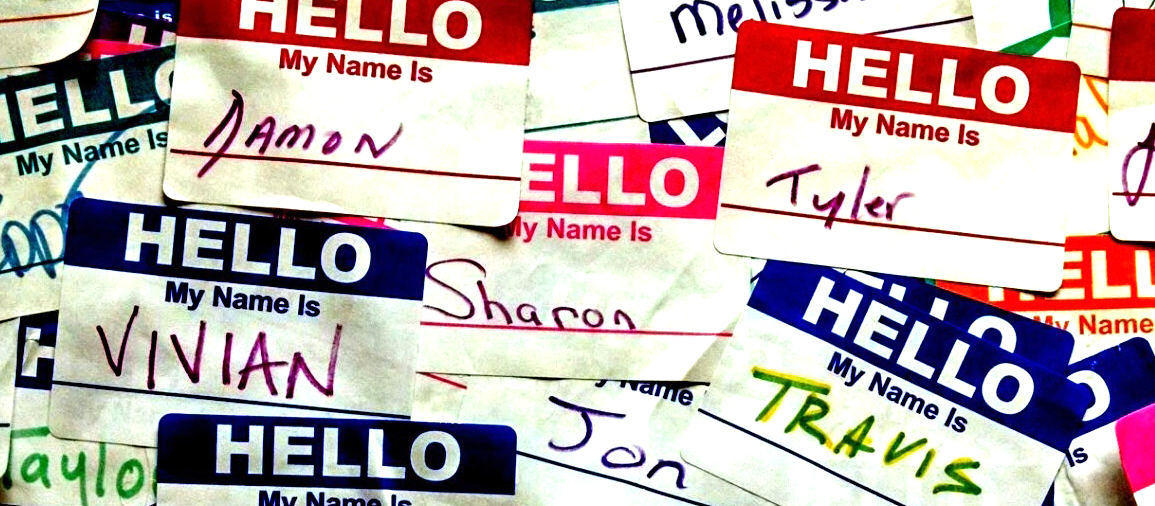What’s in a name? Quite a lot, as it happens. Picking the right name for your corporate intranet is even more important than you might think. Read on to find out why, and how to pick a good one.
What should we call our intranet?
A lot of work goes into an intranet – from making the business case, to gathering requirements, creating an information architecture, and actually building and deploying it.
Compared with all that, your intranet’s name might seem like a trivial thing. But it’s actually one of the most important elements to get right.
More than just a name
Remember that the people using your intranet will see that name day in, day out, every day, for years.
A good name is more than just a title. It helps engage your community of users with the intranet.
It can be an opportunity for a clean break with a previous system – particularly where the old intranet was unpopular. Or, where it’s replacing a previous system, a well-chosen name can provide continuity.
And the naming process itself can play a really important role in engaging staff across the organisation with the intranet project itself.
Make a name for yourself
So how do you go about choosing something that won’t just sound good, but will actively improve your new intranet’s chances of success?
The fact is, there’s no single right way to name an intranet. However, there are some criteria that a good name ought to tick off. It should:
- Generate interest and discussion among users
- Reflect some aspect of your organisation’s work, history or ethos, and
- Be something you and your company can live with for years.
You might have noticed that “meeting senior stakeholders’ expectations” is missing from this list. That’s because a well-chosen name will always be backed by solid reasoning that makes it difficult to argue with your choice.
By any other name…
Not sure where to start? Terrible with names? Don’t worry – there’s some simple ways of arriving at a good name.
We commonly find customers choosing generic names like “The Point”, “The Hub”, and “Connect”. This kind of name is universal, inoffensive, and conveys some aspect of what the system does.
However, generic names like these can also come across a bit bland and ‘safe’, and hence don’t convey a lot of personality.
A more interesting name can stem from a reference to the history, culture or purpose of your business. For example, one of our housing sector clients uses ‘The Residence’, while a bank used ‘Teller’.
These names help weave your new intranet into the fabric of your organisation from the get-go, and are immediately more memorable than the generic options.
Another approach – and one whose popularity might come as a surprise – is using a ‘human’ name. Names like Larry, Brian and Stan immediately imbue your new system with a persona.
They create a buzz around the name, and provide an opportunity for users to have fun with it (“I’ll check with Stan”).
Believe it or not, all three of those names are real examples used by some of our major enterprise customers.
Naming rights
Who gets to choose the name? A single person picking a name can cause issues – even if that person is the CEO.
People might question why the name was chosen, or feel disconnected from the process.
The same problems can stem from a ‘naming committee’, if not done right, with an increased likelihood of ending up with something insipid.
Where possible, we suggest opening up the naming process to the whole organisation. That way, you can use the process to grow interest in the intranet project, creating a buzz among colleagues.
The best way to achieve this is to run a naming competition with an all-staff vote. Depending on how much control you want over the process, you can either select a number of names yourself or via committee, or ask for submissions and select appropriate ones to go forward.
Offering a prize for the person who suggests the winning name can encourage useful or unexpected suggestions.
A second prize – for one of the voters for the winning name, picked at random – will encourage people to vote, and also force them to think their choice through.
More than just a pretty name
Engaging the whole organisation in this way doesn’t just give you a popular name.
It generates a buzz about the project, and starts conversations that will be useful in engaging staff with their new intranet, during development and after deployment.
It also begins to subtly create a real sense of ownership among staff, particularly if the name you choose is the winner of a popular vote.
Finally, the naming process can help you identify potential intranet champions – people from across the organisation who are positive about the intranet and keen to help you introduce, explain and expand it.
Big names
We hope you’ve found this article useful, and that it will help you undertake your own naming process.
If you’re preparing to start on your own intranet journey, why not check out our affordable enterprise intranet solution, Kira Intranet.
Kira comes both in Office 365 ‘cloud’ and on-premise flavours, and is used by everyone from big names like Standard Life and Tesco Bank, to SMEs, public sector organisations and charities across the UK.

